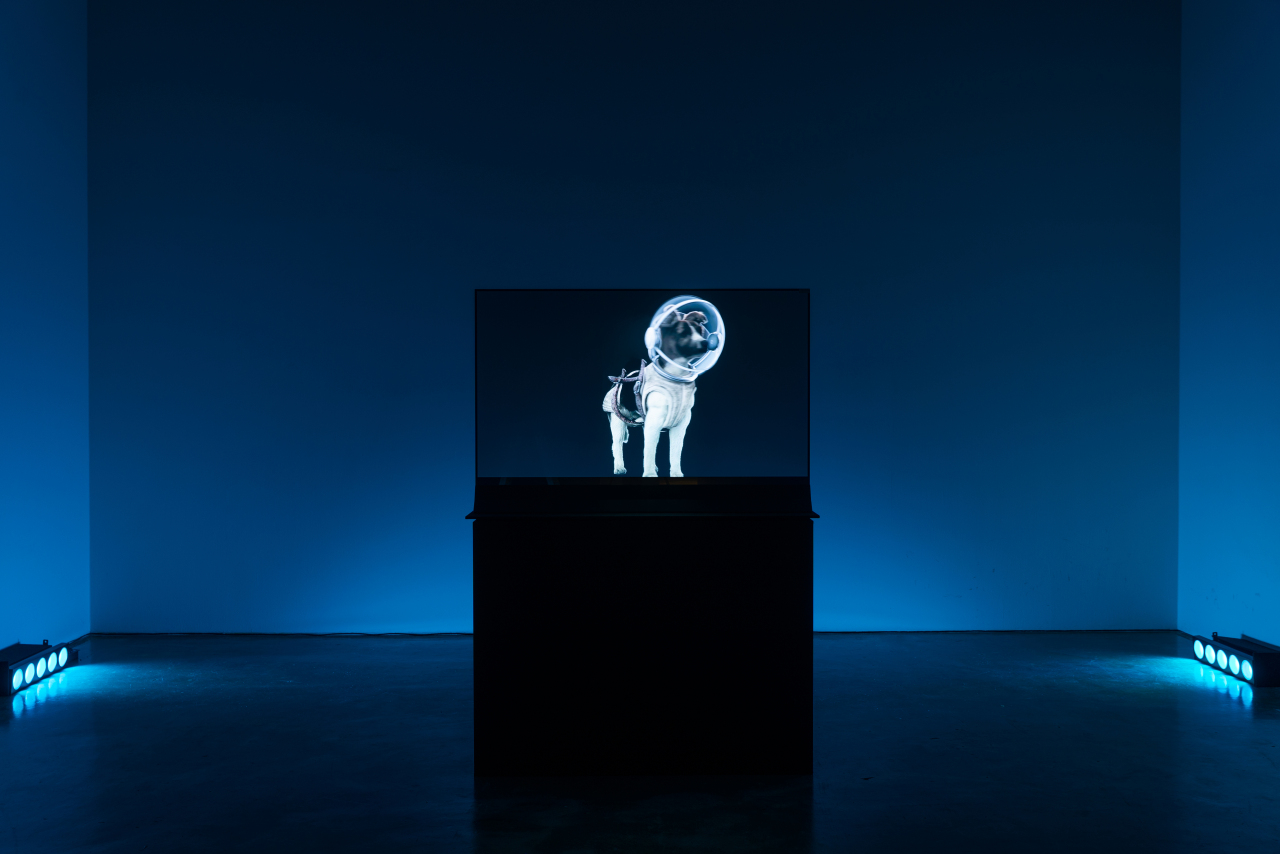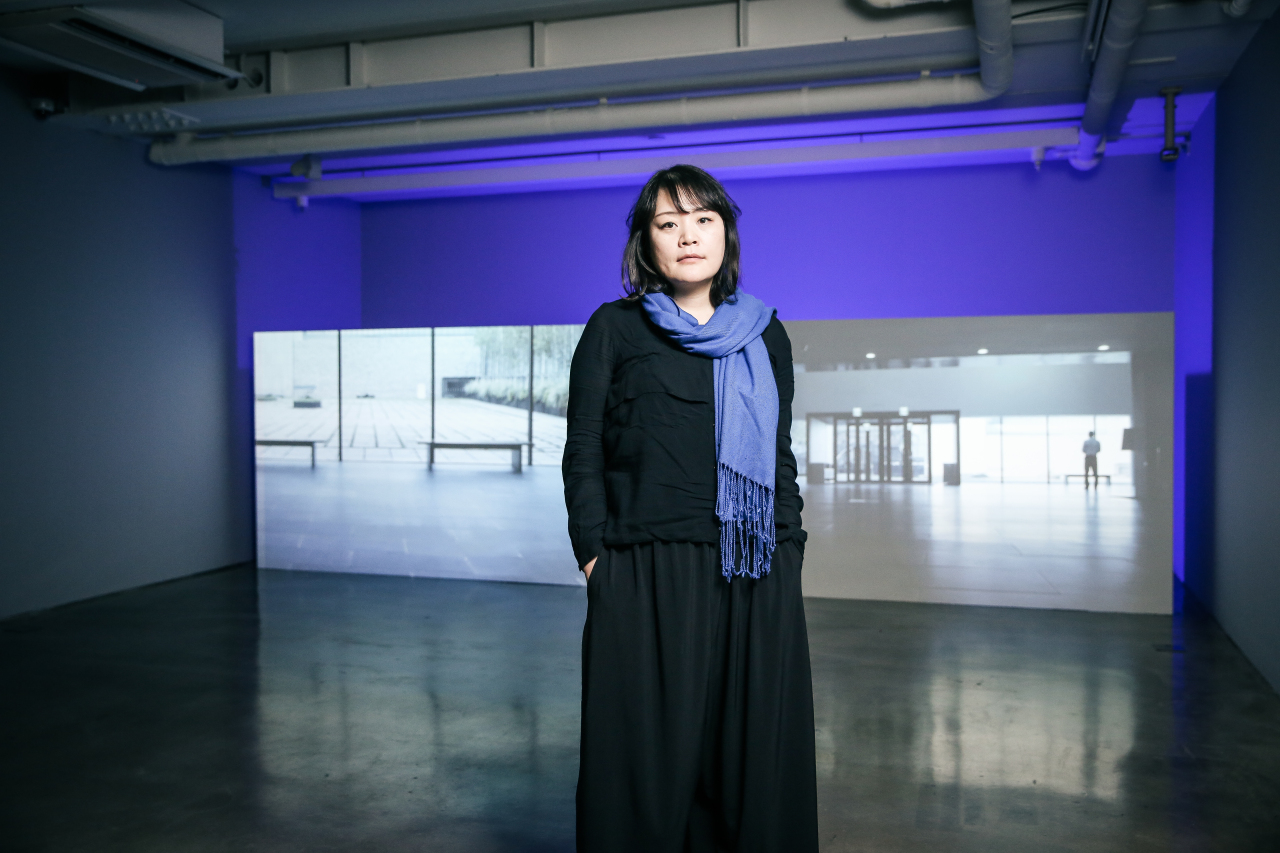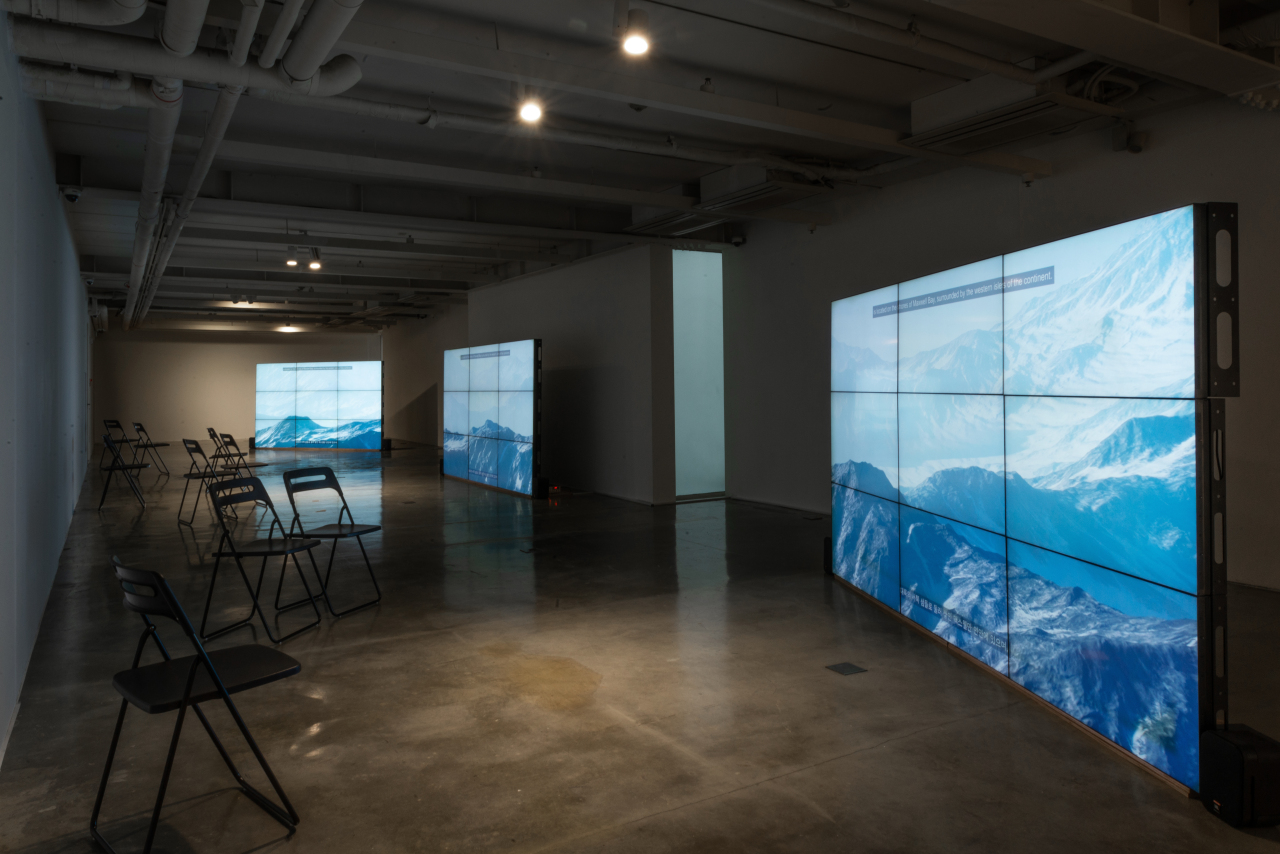In 1957, a dog was put on Soviet spacecraft Sputnik 2, becoming the first live animal to orbit Earth. Some five decades later, it was revealed that Laika, the dog, died a few hours after the launch, due to overheating in the payload caused by a mechanical failure.


Kim Se-jin’s video work “Messenger(s)” (2019), on show at SongEun ArtSpace, pays tribute to Laika, as well as those who had to move as part of mankind’s relentless efforts to conquer alien worlds.
The work is part of a solo exhibition of Kim Se-jin, the winner of the 16th SongEun Art Award in 2017, being held at SongEun ArtSpace. Titled ”Walk in the Sun,“ the show features four new video works by Kim.
The title of the exhibition is taken from a sci-fi short story by Geoffrey A. Landis, “A Walk in the Sun,” which tells of astronaut Trish, the last survivor of a spaceship that crashed while landing on the moon. The astronaut walks around the moon to stay in the sunlight needed to power her spacesuit.
According to the artist, the story of the astronaut is very much the story of everyone living here on Earth. People can settle in one place and fight their way through, but sometimes they have to relocate to find better living conditions, Kim said.
While Kim’s previous works looked into issues related to the marginalized who were forced to move to other societies, such as immigration, labor and class, the current exhibition looks at different entities moving on a global scale.
Opening the exhibition with Laika’s journey into outer space, Kim invites visitors to different locations, from Lapland to the Antarctica.

“2048” (2019) is a three-channel video that explores colonialism and the human race. The work depicts a fictitious region in Antarctica where countries, wishing to exploit natural resources, are engaged in territorial disputes. Number 2048 refers to the year the Antarctic Treaty System that governs countries’ relations in the Antarctic expires.
“To the North for Nonexistence” (2019) is a work that focuses on the narrative of an individual forced to evacuate her land. The single-channel work takes viewers to Lapland, the home of the indigenous Sami people in Scandinavia. Anita Gimvall, who renovated a 120-year-old traditional Sami house to teach the next generation about Sami culture, is forced to leave as the Swedish government pushes ahead with a plan to build wind farms.
”I felt that the arson case represents how Sami people are symbolically rooted out from the region, along with their traditions and history attached to the house and the ancestral lands,“ Kim said.
“Mosaic Transition” (2019) makes extensive use of computerized images, together with footage from “Earth Nullschool” -- an artistic invention of artist and engineer Cameron Beccario -- that shows near real-time visualization of global weather conditions.
In 2017 the visualization caused a misunderstanding among people in Korea, who took the red part on the map as the movement of fine dust particles.
By Shim Woo-hyun (ws@heraldcorp.com)




















![[Today’s K-pop] BTS pop-up event to come to Seoul](http://res.heraldm.com/phpwas/restmb_idxmake.php?idx=642&simg=/content/image/2024/04/17/20240417050734_0.jpg&u=)